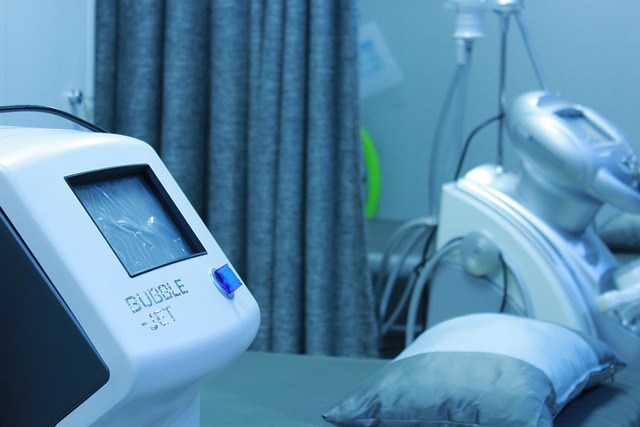Laser skin tag removal is a safe and effective method for eliminating skin tags, but it carries temporary side effects like redness and swelling. Rare immediate reactions include blistering and bleeding. Risks can be mitigated by consulting skilled professionals in reputable clinics who emphasize personalized consultations and post-treatment care guidelines. Individuals with darker skin tones or specific medical conditions may face elevated risks, underscoring the importance of specialized dermatological assessment. Insurance coverage for laser skin tag removal can help offset costs and ensure financial peace of mind.
“Considering laser skin tag removal? Understand the process, risks, and side effects first. From common short-term reactions like redness and swelling to potential long-lasting damage, every aspect matters. Learn about the procedure, unusual complications, and who’s at higher risk. Discover how to minimize dangers and ensure safety during treatment. Get informed before taking the plunge into laser skin tag removal.”
- Understanding Laser Skin Tag Removal Procedure
- Common Short-Term Side Effects
- Uncommon Risks and Complications
- Potential Long-Lasting Damage
- Who is at Higher Risk?
- Minimizing Risks and Ensuring Safety
Understanding Laser Skin Tag Removal Procedure

Laser skin tag removal is a minimally invasive procedure that utilizes concentrated light energy to target and destroy skin tags. During the treatment, a specialist will use a laser beam to burn off the skin tag, causing it to fall off or be removed in subsequent days. This method is often preferred for its precision, quick recovery time compared to surgical excision, and minimal scarring potential.
The procedure begins with a consultation where a healthcare provider assesses the number and size of skin tags, determining the most suitable laser type and settings. Topical anesthetics may be applied to minimize discomfort during treatment. A handpiece emitting the laser is then gently placed on the target area, delivering pulses of light energy. The process is typically quick, with each skin tag taking only a few seconds to treat. For larger or more numerous tags, multiple sessions spaced several weeks apart might be required for complete removal. Many patients appreciate this method due to its effectiveness and the relatively short downtime compared to other removal techniques, as demonstrated by successful outcomes at top clinics like those in Canterbury, Liverpool, and Bristol.
Common Short-Term Side Effects

The laser skin tag removal procedure is generally considered safe, but like any medical treatment, it’s not without potential side effects. Common short-term reactions include redness, swelling, and mild pain or discomfort at the treated area. These symptoms are usually temporary and subside within a few hours to a couple of days. Some individuals might experience crusting or flaking of the skin, which is part of the healing process. It’s crucial to follow your healthcare provider’s aftercare instructions, including keeping the treated site clean and applying recommended topical agents, to minimize these short-term side effects.
While rare, other possible immediate reactions include blistering, bleeding, or a burning sensation during the procedure. These could be signs of an adverse reaction to the laser or an underlying skin condition. Long-term risks are scarce but can include changes in skin color, scarring, or texture abnormalities if the treatment is not performed correctly or by a qualified professional. Comparing laser skin tag removal for children or laser skin tag removal: what to expect with alternative methods like shaving highlights that while lasers offer precise targeting, they may not be suitable for everyone, especially younger patients or those with sensitive skin, due to potential side effects and risks.
Uncommon Risks and Complications

While generally considered safe, any medical procedure carries potential risks and complications. With laser skin tag removal, these may include changes to the skin’s appearance, such as redness, swelling, or blistering at the treatment site. In rare cases, infection can occur if proper post-treatment care guidelines aren’t followed.
At a reputable Manchester skin tag clinic, skilled professionals use the latest laser technology for skin tags to minimize these side effects. However, it’s crucial to be aware that everyone’s experience is unique. Before undergoing any laser skin tag removal procedure, patients should openly discuss potential risks and complications with their provider to make an informed decision.
Potential Long-Lasting Damage

While many people seek laser skin tag removal as a quick solution, it’s crucial to understand that this procedure isn’t without potential long-lasting damage. Unlike other methods, laser treatments can lead to unforeseen complications if not executed properly. The intense beam of light can cause collateral damage to surrounding healthy skin tissues, resulting in blistering, scarring, or even changes in skin pigmentation. These side effects may be temporary, but they can also persist and require additional treatments or corrective procedures.
For instance, individuals considering laser skin tag removal should be aware that the best laser treatment for skin tags is not one-size-fits-all. Factors like skin type, tag size, and location play a significant role in determining the effectiveness and safety of the procedure. Professional clinics, such as Preston Skin Tag Clinic or Blackburn’s top dermatology centers, emphasize the importance of personalized consultations to mitigate these risks. They offer guidance on whether laser treatment is the optimal choice and help set realistic expectations.
Who is at Higher Risk?

Those considering laser skin tag removal should be aware that certain factors can increase their risk of experiencing side effects or complications during and after the procedure. Individuals with darker skin tones are generally at higher risk, as the pigment in darker skin may make it challenging for the laser to differentiate between the target tags and surrounding healthy tissue. This could potentially lead to more significant skin irritation or changes in skin color.
Additionally, people with certain medical conditions like diabetes, autoimmune disorders, or those taking specific medications might face elevated risks. Laser treatments can sometimes trigger an immune response, and pre-existing conditions may complicate this process. It’s advisable for patients in these categories to consult a qualified dermatologist who specializes in the laser skin tag removal procedure, such as those offering private skin tag removal Chelmsford services, to assess their suitability and mitigate potential risks.
Minimizing Risks and Ensuring Safety

To minimize risks and ensure safety during the laser skin tag removal procedure, it’s crucial to seek services from experienced professionals. Reputable clinics like those offering private skin tag removal Doncaster or Bolton have strict protocols in place to safeguard patients. These include thorough consultations to understand individual skin types, previous treatments, and any medications, ensuring informed consent. Qualified technicians use advanced equipment and follow best practices to minimize side effects like temporary redness, swelling, or blistering, which usually subside within a few days.
Additionally, understanding insurance coverage for laser skin tag removal is essential. While policies vary, some may include these procedures under aesthetic or dermatological treatments. Verifying with your insurer if laser skin tag removal is covered can help offset potential costs and ensure you receive the treatment without unexpected financial burdens.
Laser skin tag removal has proven effective for many, but it’s crucial to be aware of potential side effects and risks. From common short-term reactions like redness and swelling to uncommon complications like infection or permanent skin damage, understanding these possibilities is essential for informed decision-making. While the procedure offers a precise and relatively painless method of removal, individuals with certain skin conditions or those taking specific medications may face higher risks. To minimize these, it’s vital to consult with a qualified professional who can tailor advice to your unique needs. When approached carefully, laser skin tag removal can provide lasting solutions, but being proactive about safety measures is key.
